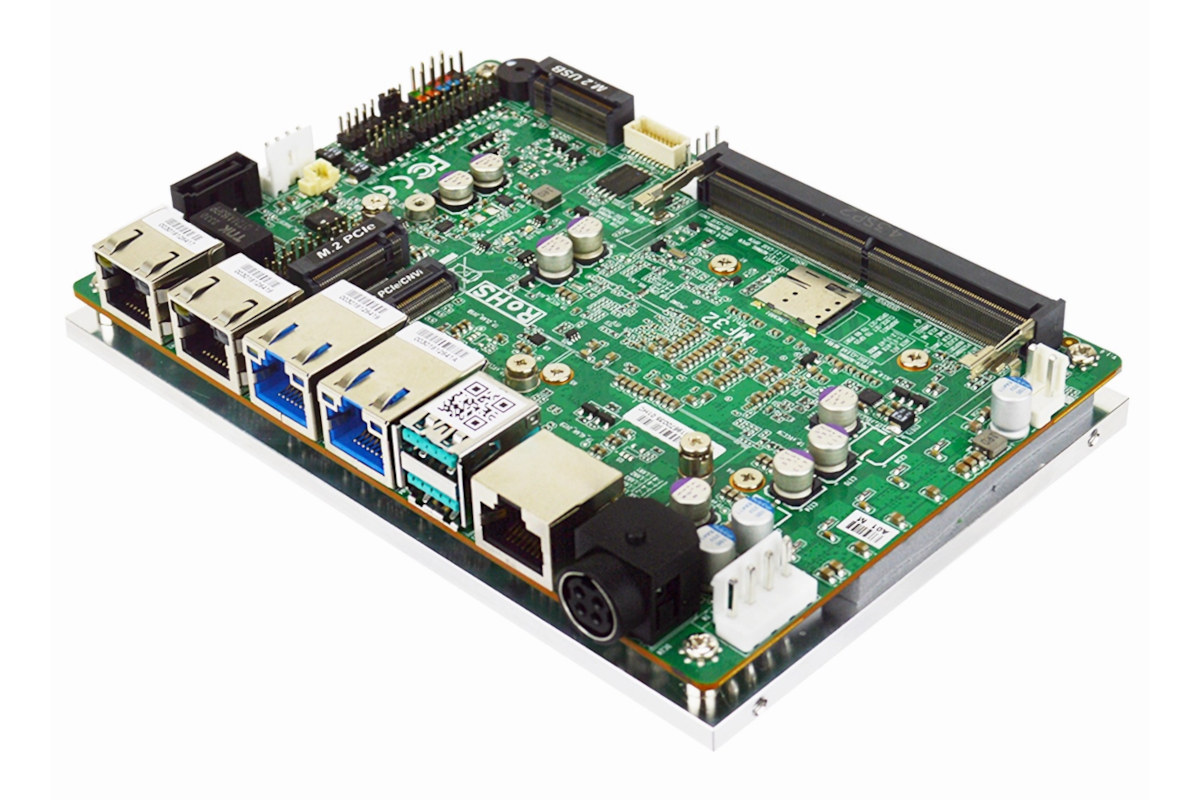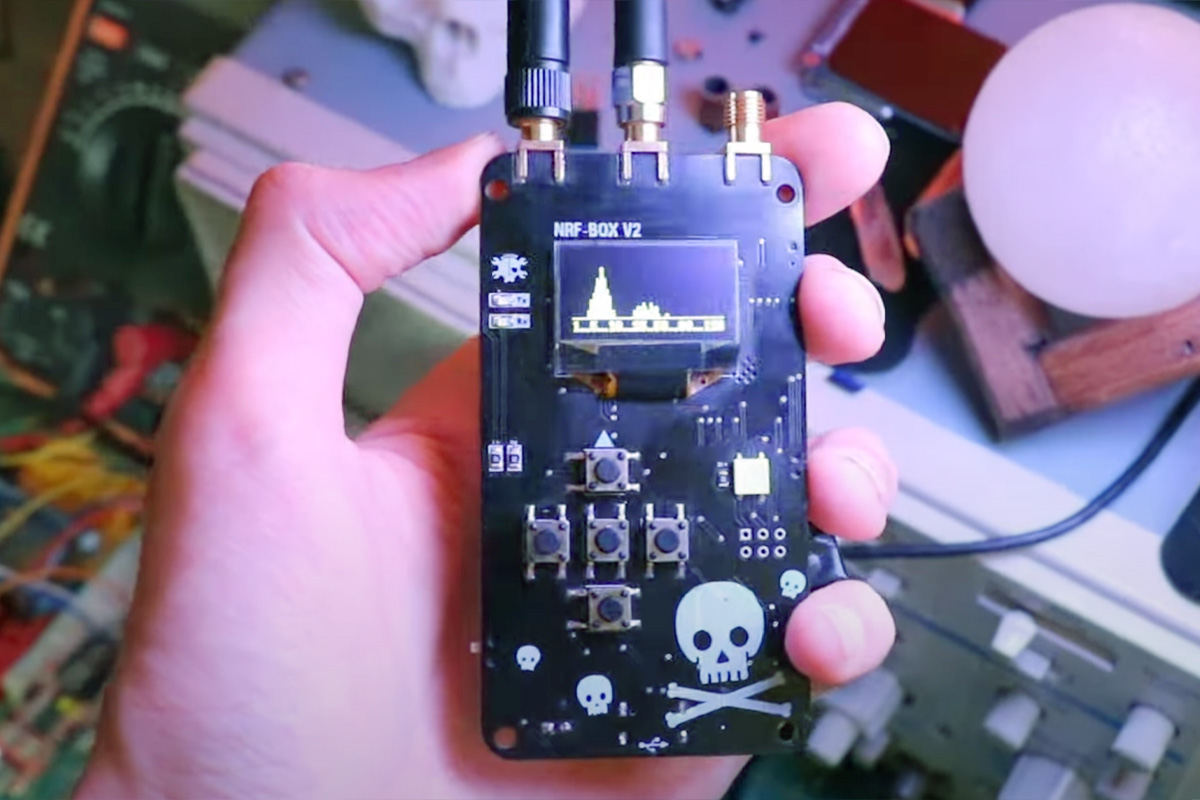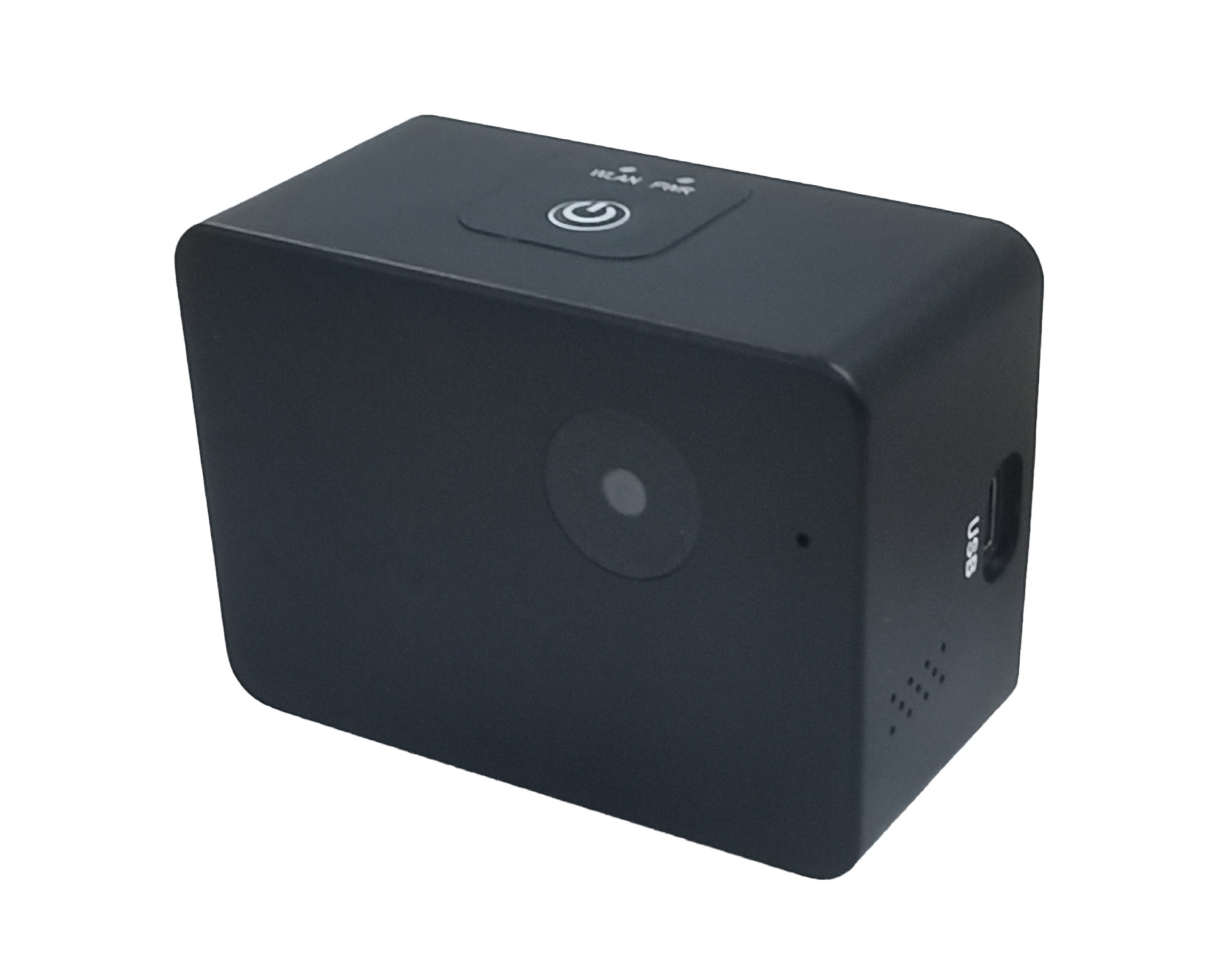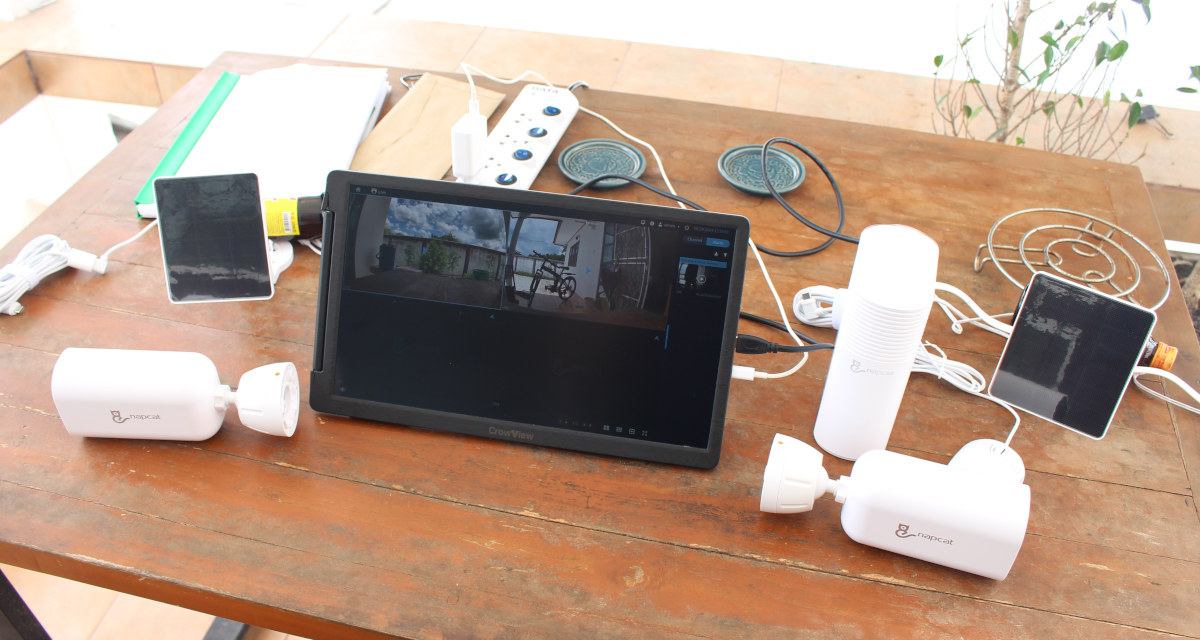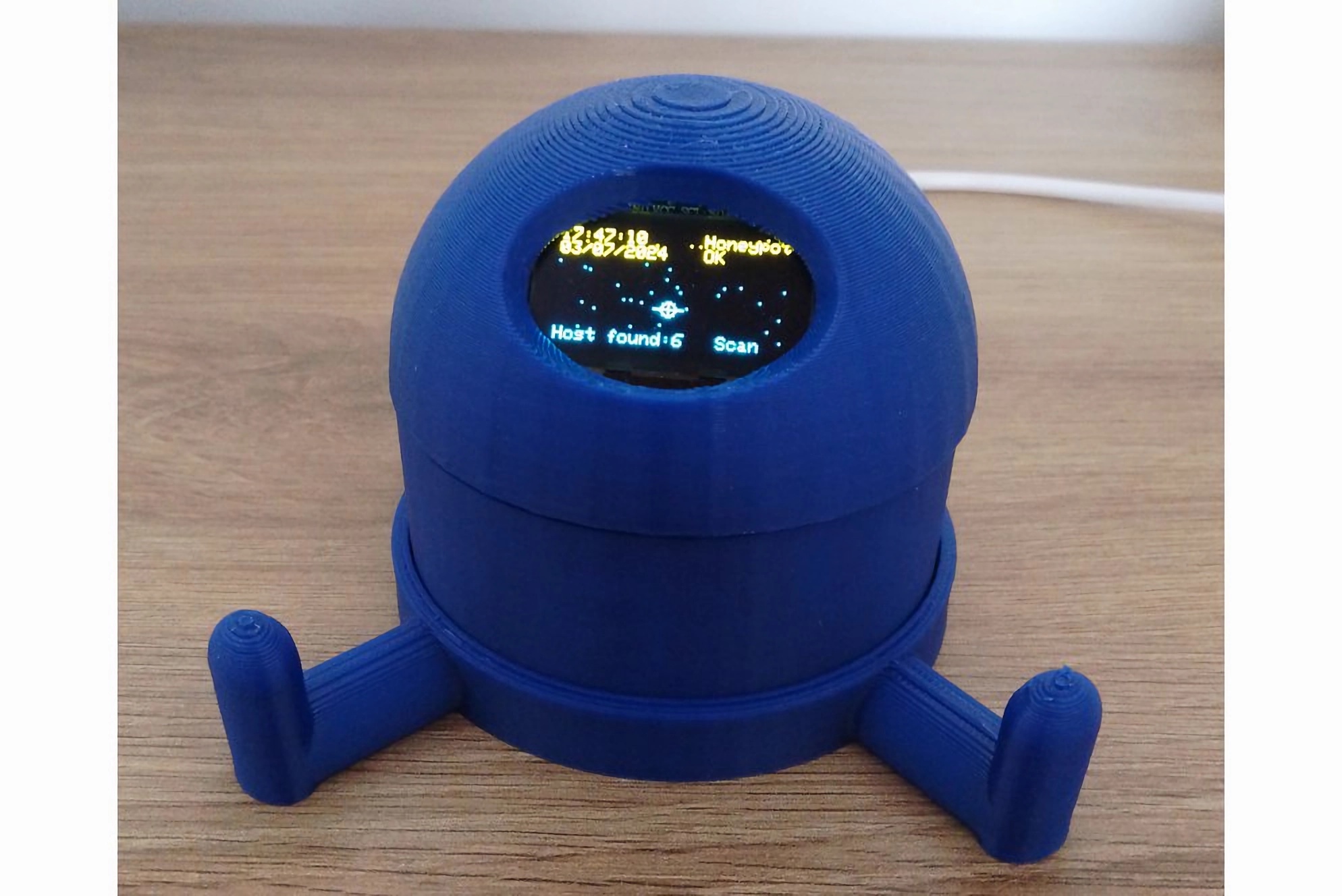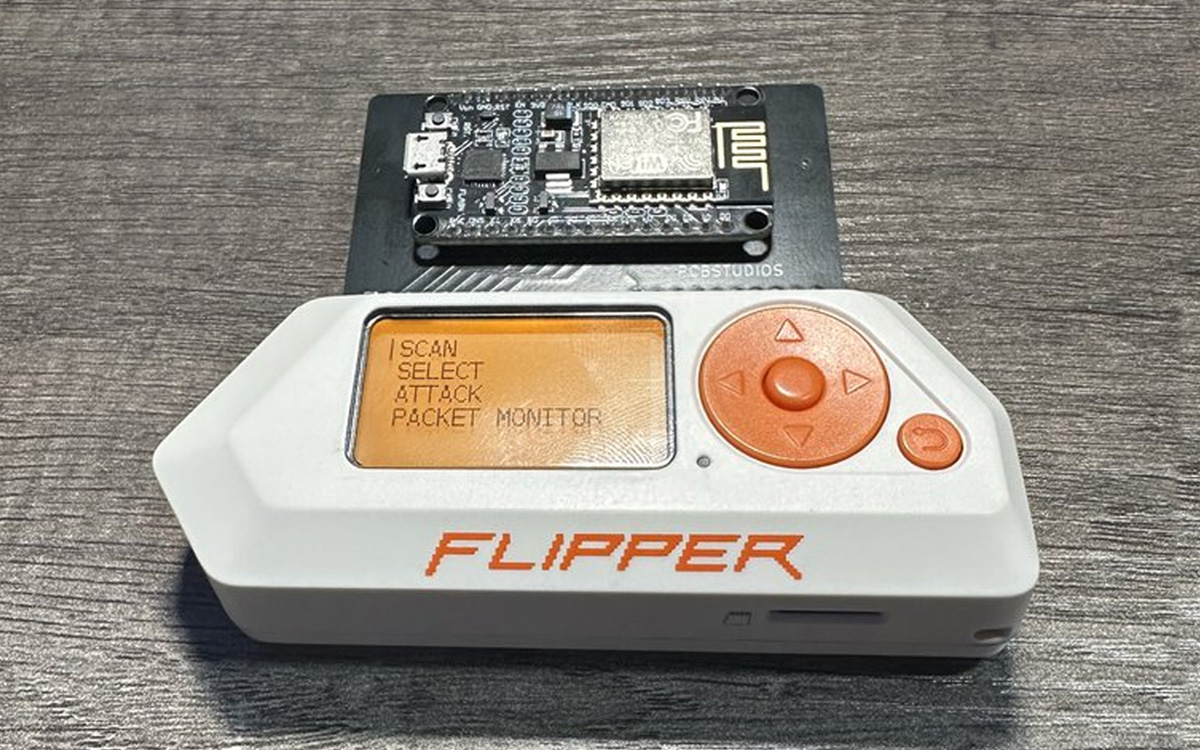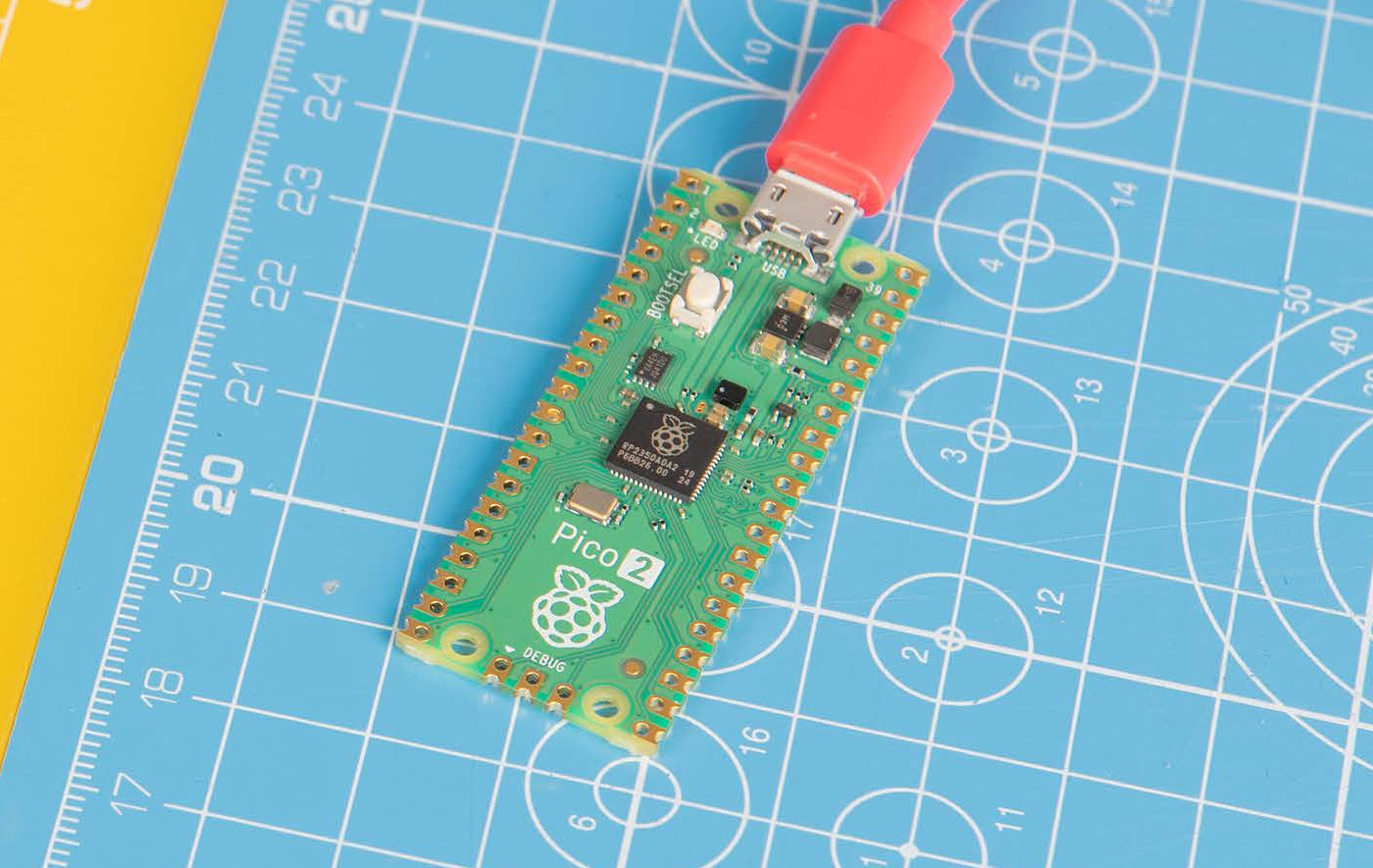Jetway MF32 is a 3.5-inch single-board computer (SBC) offered with either an Intel 13th Gen Core i5-1335UE or an Intel Processor U300. It includes four Intel 2.5GbE LAN ports and optional dual PoE with a max output of 40W. The board supports up to 32GB of DDR5 memory, offers various M.2 expansion slots, and comes with a Nano SIM card slot. This board can be used in networking devices, edge computing, IoT projects, digital surveillance, etc… Jetway offers four variants of their MF32 SBC: The MF32-133E0 and MF32-133E2 models are equipped with the Intel Core i5-1335UE processor, while the MF32-300U0 and MF32-300U2 feature the Intel Processor U300. It’s important to note that the MF32-133E0 and MF32-300U0 do not include TPM 2.0 (dTPM) security features. Jetway is well known for its SBCs, and we’ve previously covered its products like the JMTX-ADN8, JNUC-ADN1 mini-ITX motherboard, and JF35-ADN1 3.5-inch motherboard, all featuring the […]
Mayhem v2 expansion for Flipper Zero adds Wi-Fi, BLE, camera, microSD card slot, and NRF24 or CC1101 radio support
Erwin Ried‘s Mayhem v2 is an all-in-one ESP32 and NRF24L01-based expansion board designed for Flipper Zero. This board adds Bluetooth and Wi-Fi through an ESP32-S module, features 2MP camera with flashlight, a microSD card slot, and support for either an NRF24L01 module (for sniffing and mousejacking) or a CC1101 module (for external radio communication). These features make this Flipper Zero add-on board useful for WiFi and Bluetooth penetration testing, motion detection, QR code reading, and as a nanny cam with remote access. Previously we have written about similar expansion boards like the Flipper Zero ESP8266 Deauther which adds de-authentication capabilities and the Flipper Add-On CANBus which can be used to sniff, send, and log CAN bus packets directly from the Flipper Zero. Feel free to check those out if you are interested in those tools. Mayhem v2 Flipper Zero add-on board specification Wireless Module – ESP32-S WiFi 802.11 b/g/n + […]
nRFBOX V2 ESP32 wireless hacking tool can scan, analyze, spoof, and jam the whole 2.4GHz spectrum
CiferTech has recently introduced the nRFBOX V2 ESP32-based wireless hacking tool designed for spectrum analysis, jamming, BLE device emulation, and more. The device is built around an ESP32-WROOM-32U module and includes an NRF24 module covering the whole 2.4GHz spectrum. Additionally, the device has a 0.96-inch OLED display, a five-way microswitch control pad, and a WS2812 RGB LED for feedback. The device can also be operated with a single 3.7V lithium battery, and that batter’s charging is handled by a TP4056 charging IC. All these features make this device useful for wireless security testing, educational environments, research, and hobbyist projects. Previously we have written about similar portable hacking tools like the DSTIKE Deauther Watch X, the HackBat pen-testing device, and the popular Flipper Zero wireless hacking tool. Feel free to check those out if you are looking for similar products. nRFBOX V2 specifications Microcontroller – ESP32-WROOM-32U with ESP32 dual-core wireless microcontroller […]
Vantron HCAM26 WiFi HaLow IP camera offers up to 1km range
Vantron HCAM26 is an IP camera based on the company’s VT-MOB-AH-L sub-GHz 802.11ah WiFi HaLow module itself equipped with Morse Micro MM6108 RISC-V SoC and offering up to 1km range and better wall penetration than WiFi security cameras operating at 2.4 GHz or 5GHz frequencies. The Linux camera comes with 1GB RAM and 8GB eMMC flash, features a 5MP (2592 x 1944) camera sensor, supports AI features through a 2.0 TOPS NPU integrated into the main SoC, and is also fitted with a speaker and microphone for two-way audio, and a micro HDMI port to monitor the camera output. A 2,600mAh Li-ion battery powers the camera. Vantron HCAM26 specifications: SoC – Unname, but most likely Rockchip RV1126 CPU – Quad-core Arm Cortex-A7 32-bit vision processor with RISC-V core ISP – 14MP ISP VPU H.265/H.264 codecs Frame rate – 3840 x 2160 @30 fps + 1080p @30 fps encoding supported ; […]
Review of Napcat wireless NVR with solar-powered security cameras
After I reviewed the NapCat smart video doorbell last June, the company asked me to review a wireless NVR with solar-powered security cameras and I understood I would receive a kit with four solar-powered cameras and an NVR with storage preinstalled. In this review, I’ll go through an unboxing, a quick teardown of the NVR, the installation process, and my experience with the Napcat NVR user interfaces (connected to HDMI) and the Napcat Life Android app which I also used with the video doorbell. Napcat wireless NVR N1S22 kit unboxing The package I’ve received reads “N1S22” model of a “Solar-powered Security Camera System” and is quite smaller than I expected. One reason for the small size is that my kit only comes with two cameras instead of four, and the company also did a good job of making everything take as little space as possible. On the net, you’ll see […]
ESP8266-powered Netgotchi network security scanner aims to protect your home network
The Netgotchi network security scanner is a simple, compact device based on an ESP8266 wireless microcontroller with a single goal: to defend your home network from intruders and potential bad actors. It is described as “Pwnagotchi’s older brother,” a network guardian that keeps your network safe instead of penetrating it. If you are unfamiliar with Pwnagotchi, it is an A2C-based (advantage actor-critic) “AI” that can penetrate Wi-Fi networks using WPA key material obtained from passive sniffing or de-authentication attacks. The Netgotchi is a reverse Pwnagotchi that alerts you to intruders or breaches in your network. It runs on a simple microcontroller and cannot employ reinforcement learning like the Pwnagotchi. Rather, it pings the network periodically and reports any new potential security threats. The device’s design is as simple as its purpose. It is an ESP8266 microcontroller connected to an OLED display and running an Arduino .ino script, enclosed in a […]
Flipper Zero hacking tool gets ESP8266 Deauther add-on for Wi-Fi security and research
PCB Studios has just launched the “Flipper Zero ESP8266 Deauther” adapter board for Flipper Zero that enables users to conduct de-authentication attacks on Wi-Fi networks. Running a modified version of SpacehuhnTech’s ESP8266 Deauther software, this board has a variety of actions for testing 802.11 wireless networks. Its primary function, deauthentication, sends deauthing packets to the target network, disconnecting devices from their 2.4 GHz Wi-Fi networks. In our last post about Flipper Zero, we wrote about Flipper Add-On CANBus a CAN bus hacking tool that can sniff, send, and log CAN bus packets. Other than that we have seen similar tools like the M1 multitool and HackBat which can be considered as Flipper Zero alternatives with STM32H5 and Raspberry Pi RP2040 MCUs and Wi-Fi connectivity. We have also written about various ESP8266 and ESP32-based Deauther tools like the DSTIKE Deauther Watch X, the Cheap Evil Tech Deauther board, and ESP32 Marauder […]
$5 Raspberry Pi Pico 2 launched with Raspberry Pi RP2350 dual-core RISC-V or Arm Cortex-M33 microcontroller
The Raspberry Pi Pico 2 is an MCU development board based on the new Raspberry Pi RP2350 dual-core RISC-V or dual-core Cortex-M33 microcontroller with 520 KB on-chip SRAM, a 4MB flash, a micro USB port for power and programming and the same GPIO headers as the Raspberry Pi Pico board with an RP2040 dual-core Cortex-M0+ microcontroller with 264KB SRAM. The RP2350 embeds both an open-source Hazard3 RISC-V dual-core CPU and a dual-core Cortex-M33, but only one cluster can be used at a given time. Apart from the faster MCU cores and higher SRAM capacity, the RP2350 is about the same as the RP2040, albeit it also adds one extra PIO block bringing the total to three. One important new feature is built-in security when using Arm Cortex-M33 cores with Trustzone and other security features. Raspberry Pi RP2350 microcontroller Let’s have a closer look at the RP2350 microcontroller, before checking out […]


